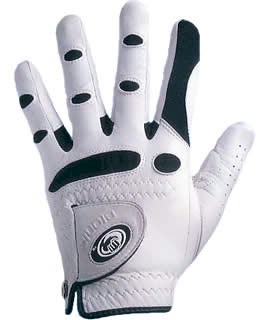As predicted in February and expanded upon in March (and discussed in our forum), Titleist is going to be introducing a new line of irons on August 15. The 735.CM blends the forgiveness of a cavity-back in the longer irons with the control of a muscle-back in the short irons. Aimed at skilled players who are looking for a little more help in the long irons than a full muscle-back set provides, this is Titleist’s first off-the-shelf “combo” set.
As with all Titleist equipment, the 735.CM has been extensively used on tour this year by an impressive list of Titleist staff members, including: Davis Love III, Brad Faxon, Frank Lickliter II, Bill Haas, Tom Kite, Tom Byrum, Lucas Glover, Steve Stricker, Rob Rashell, Hunter Haas, Dudley Hart, Jason Hartwick, Chez Reavie, Craig Perks, Kip Henley, and others.

Click for a larger image. See the March story for more images.
The Titleist 735.CM (“CM” stands for “cavity to muscle”) irons are going to be available in two different alloys – forged stainless steel and chrome plated forged 1025 mild carbon steel. The first will resemble the existing 704 irons, while the latter will look like the image above. Titleist says that the Forged 410 stainless steel will provide a soft, solid feel with a rich, non-glare satin finish. The Forged 1025 mild carbon steel, the primary choice of tour players, provides an even softer feel with traditional chroming for a stunning appearance. The stainless steel forging will offer a few more custom options than the carbon steel irons.

 If the glove doesn’t fit the guidelines, then you must deem it non-conforming. Sure, that may not be as catchy as Johnny Cochran’s famous slogan, but that’s what the USGA has been preaching to Louisville Slugger. Hillerich and Bradsby Co., manufacturer of the Bionic Glove line and Louisville Slugger baseball equipment,
If the glove doesn’t fit the guidelines, then you must deem it non-conforming. Sure, that may not be as catchy as Johnny Cochran’s famous slogan, but that’s what the USGA has been preaching to Louisville Slugger. Hillerich and Bradsby Co., manufacturer of the Bionic Glove line and Louisville Slugger baseball equipment,  In last week’s issue of
In last week’s issue of